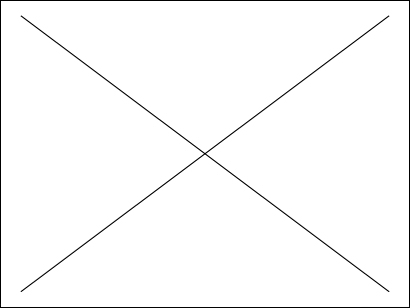Livre - Henri Rousseau
710.3 ROU
[Exposition. Venise, Palazzo ducale. 2015] / [Exposition. Prague, Národní Gallerie. 2015]
Description
Livre
24 ore cultura
Belli Gabriella 1952 - ...
Cogeval Guy 1955 - ...
Fondazione Musei civici di Venezia
Palazzo Ducale (Venise, Italie)
Národní galerie (Prague)
Presentation materielle : 1 vol. (279 p.)
Dimensions : 32 cm
“I have already been told I do not belong to my century.” Henri Rousseau A central figure in figurative art between the end of the 19th century and the revolutionary period of the avant-garde movements, and famous for his dreamlike atmospheres, forests and enchanted landscapes, Henri Rousseau (Laval, 1844 – Paris, 1910), has always been impossible to pigeonhole. It is pointless to label his work: even the way the painter has been interpreted has most often been the result of a series of misunderstandings; and yet the force of his painting, snubbed by critics but appreciated by artists, is the expression of a phenomenon that has no comparison in art between the 19th and 20th century. With the special collaboration of the Musée d’Orsay in Paris and under the patronage of the Soprintendenza per i Beni Architettonici e Paesaggistici di Venezia e Laguna, the Fondazione Musei Civici di Venezia is dedicating an extraordinary exhibition to Rousseau, known also as Le Douanier. Produced by 24 ORE Cultura – Gruppo 24 ORE, the exhibition will boast over 100 works from leading international institutions (40 masterpieces by Rousseau himself and 60 works for the purposes of comparison), and will be held in the Doge’s Apartments in the Doge’s Palace. The project, arising from an idea by Gabriella Belli and Guy Cogeval, the exhibition’s commissioners, and shared and developed with the collaboration of Laurence des Cars and Claire Bernardi, aims not to be the latest in a long line celebrating the French painter’s naïveté but rather the presentation of a long series of studies started more than three years ago. This research has given Rousseau’s oeuvre the right critical and historical weight: the artist was a point of reference for the great exponents of the historical avant-garde movements, for intellectuals like Apollinaire and Jarry, for great collectors like Wilhelm Uhde, and for many painters who preceded and and went beyond the Cubist season. Artists such as Cézanne and Gauguin, Redon and Seurat, Marc, Klee, Morandi, Carrà, Frida Kahlo and Diego Rivera, not to mention Kandinsky and Picasso. All of these artists will be present in the show with works that fit in coherently with those painted by Le Douanier in his brief but intense creative season between 1884 and 1910. Alongside these artists, the exhibition will present a careful selection of Old Masters including Liberale da Verona, Fede Galizia, Frans Post and Francisco Goya – to offer a wholly new critical investigation into that inspiration stimulated by archaism which over the centuries runs hand in hand with classicism and of which Rousseau’s oeuvre seems to mark the watershed between 19th and 20th century. Such an event has never before been held in Italy. Through a lively sequence of thematic sections, the exhibition will make it possible to admire some of the French painter’ most famous masterpieces, including the Self-portrait (1889-90) the artist considered the first “portrait-landscape” in the history of art, The poultry yard (1896-98), bought by Kandinsky and exhibited in the first Blaue Reiter show in Munich, War or the ride of discord (1894), painted by Rousseau with that innocent eye that Ardengo Soffici, a firm supporter, defined as being full of “child-like ingenuousness”. An “archaic candour” also emerges in the paintings dedicated to wild nature and in his famous jungle scenes, of which no less that seven will be on display – from the beautiful Snake Charmer (1907) to the Horse attacked by a jaguar (1910) – as well as in his most bucolic views of countryside and town. His still lives and astonishing series of male and female portraits (often of friends or family members) reveal Rousseau’s capacity for recording the life of the lower middle class, the protagonist of a peaceful and apparently innocuous suburban existence, and the characteristic force of a wholly unique and original artist.
BELLI Gabriella, COGEVAL Guy, ROUSSEAU, OR ABOUT ARCHAIC NAIVETÉ, p. 19 TERRAROLI Valerio, THE AGE OF INNOCENCE. An “Enchanted Glance” as the Borderline between Reality and Dream, p. 31 DES CARS Laurence, THE INVENTION OF MODERN ARTIST, p. 45 LE PICHON Yann, THE SOURCES OF INSPIRATION FOR THE DOUANIER ROUSSEAU, p. 53 BERNADI Claire, THE DOUANIER ROUSSEAU AS SEEN BY THE PARISIAN AVANT-GARDE. The Conception of Singularity in Modern Art, p. 63 PONTIGGIA Elena, THE DOUANIER ROUSSEAU AND ITALIAN ART IN THE FIRST HALF OF THE 20TH CENTURY, p. 73 LAMPE Angela, “WHAT A WONDERFUL PERSON ROUSSEAU MUST HAVE BEEN!” (Wassily Kandisky in a letter to Franz Marc), p. 81 CATALOGUE SECTION I – A SELF-TAUGHT ACADEMIC?, p. 93 SECTION II – PORTAIT/SELF-PORTAIT, p. 103 SECTION III – THE RIDE OF DISCORD, p. 113 SECTION IV – LE JARDIN DES PLANTES, p. 129 SECTION V – QUINTESSENTIAL ORDIRNARESS, p. 153 SECTION VI – DE RERUM NATURA, p. 175 SECTION VII – DER BLAUE REITER, p. 197 SECTION VIII – ARCHAIC NAIVETÉ, p. 215 APPENDICES MATHIAS Annabelle, ROUSSEAU: A CRITICAL ANTHOLOGY, p. 254 LE PICHON Yann, HENRI-JULIEN-FÉLIX ROUSSEAU. CHRONOLOGICAL BIOGRAPHY, p. 262 LIST OF WORKS EXHIBITED, p. 274
Chrono. p. 262-273
